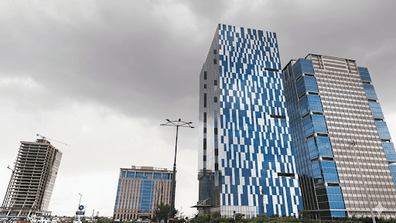💱 FCNR(B) Deposit Swap with RBI: 2025 FAQs for Treasury & Compliance Teams
- GIFT CFO
- Jul 18
- 3 min read
Updated: Jul 24
🌍 Introduction: What Is the FCNR(B) Swap Facility?
To manage forex flows and support NRI deposits, the Reserve Bank of India (RBI) introduced a swap window for banks mobilizing Foreign Currency Non-Resident [FCNR(B)] deposits.
Under this facility:
Banks mobilize fresh FCNR(B) deposits
RBI enters into a buy/sell forex swap covering only the principal
Aims to stabilize forex reserves and provide INR liquidity to banks
This 2025 FAQ blog simplifies key compliance, accounting, and treasury aspects of the FCNR(B) swap facility under FEMA and RBI directives.

🏦 Q1. What are the pre-conditions for FCNR(B) deposit eligibility for RBI swap?
Must be fresh deposits mobilized on or after Sept 6, 2013
Permitted currencies only
Minimum maturity: 3 years
Lock-in period: 1 year
💡 Other FCNR(B) deposits (non-compliant) won’t qualify for the RBI swap.
📋 Banks must maintain separate ledgers and audit trails for:
Eligible FCNR(B) swap-linked deposits
Non-swap FCNR(B) deposits
🔁 Q2. What is the nature of the swap offered by RBI?
A simple buy/sell forex swap:
RBI buys the foreign currency (e.g., USD) when deposit is received
RBI sells it back at maturity
Only principal is covered (no interest component)
🔄 Q3. Can renewed deposits be treated as fresh deposits for swap?
✅ Yes, if:
Renewed at maturity
New tenure is ≥ 3 years
One-year lock-in applies
💸 Q4. How is the 3.5% swap cost calculated?
Compounded semi-annually
Applied for the entire tenor
Not a flat annual charge
📌 Effective cost accumulates over the swap’s life span (see illustration below).
🕒 Q5. When can banks approach RBI for swaps?
After accumulating at least USD 1 million in eligible FCNR(B) deposits
Banks are expected to conduct swaps with RBI once a week
Coordinate with the Financial Markets Department of RBI
📅 Q6. How is the swap tenor determined?
Matches the tenor of underlying deposits
Must be ≥ 3 years
Bank must specify exact tenor in number of days
📈 Q7. Is it mandatory to pass swap benefit to depositors?
❌ No. Banks may decide deposit interest rates within RBI’s ceiling limits.Refer: Circular DBOD.Dir.BC.38/13.03.00/2013-14 (Aug 14, 2013).
🚫 Q8. What if the deposit is withdrawn prematurely?
The bank must cancel the swap with RBI
Cancellation can be batched after reaching a threshold (as defined by RBI)
🔄 Q9. How is the swap re-priced after premature withdrawal?
Swap cost is re-computed based on remaining tenor
Revised swap is entered with RBI
Follows transparent cost-adjustment methodology (see Illustration below)
❌ Q10. Can a swap be canceled even if deposit isn’t withdrawn?
❌ No. Only deposits withdrawn before maturity trigger swap cancellation.
💱 Q11. How are non-USD FCNR(B) deposits treated?
Convert to USD equivalent at prevailing market rate
Maintain consistent conversion policy
Document and audit all conversions
💵 Q12. Can banks use other forex sources during withdrawal?
✅ Temporarily, yes. While swap cancellation is in progress, banks may:
Arrange USD from other permitted sources
Must still unwind the swap with RBI for the withdrawn deposit
🤝 Q13. Is ISDA agreement with RBI required?
❌ No ISDA agreement is required for RBI swaps.
🕒 Q14. What if residual deposit tenor is <3 years due to late swap?
✅ Allowed if:
Original deposit met 3-year requirement
Delay occurred while accumulating minimum USD 1 million
RBI allows swaps for residual maturity, even if slightly <3 years.
🧮 Q15. Are RBI swaps exempt from capital norms?
✅ Yes. Though swaps are “in-the-money” and off-market:
Exposure to RBI is exempt from capital adequacy norms
🌐 Q16. Can banks provide loans abroad using FCNR(B) deposits?
✅ Yes. Banks may:
Provide loans abroad to FCNR(B) account holders
Place lien on FCNR(B) deposits as collateral
Refer to RBI’s NRI Deposit Scheme FAQs.
📊 Illustration: Swap Cost & Repricing Example
Initial Swap Deal (USD 1 million)
Leg | Date | USD-INR Rate |
Buy (near) | 23 Sep 2013 | 62.6390 |
Sell (far) | 09 Feb 2017 | 70.4419* |
🔢 Rate compounded at 3.5% semi-annually for 1235 days
Premature Withdrawal after 756 Days
Remaining tenor: 479 days
Revised swap cost: 14.9%(3.5% + 4.0% + 7.4%)
New Swap Deal
Leg | Date | USD-INR Rate |
Sell (near) | 19 Oct 2015 | 84.3561 |
Buy (far) | 09 Feb 2017 | 70.4419 |
This adjusts for the terminated swap and ensures consistent cost treatment.
📌 Conclusion: FCNR(B) Swaps Are Strategic — But Complex
The RBI FCNR(B) swap facility is a tactical tool for forex management and liquidity optimization. Treasury and compliance teams must maintain:
Accurate eligibility classification
Consistent swap tenor reporting
Timely swap initiation and cancellation
Full audit trails and pricing disclosures
📩 Need help navigating RBI swap windows, audit prep, or NRI deposit compliance? Partner with GIFT CFO — India’s go-to advisory for treasury support, RBI filings, and FEMA compliance.


























































































Comments